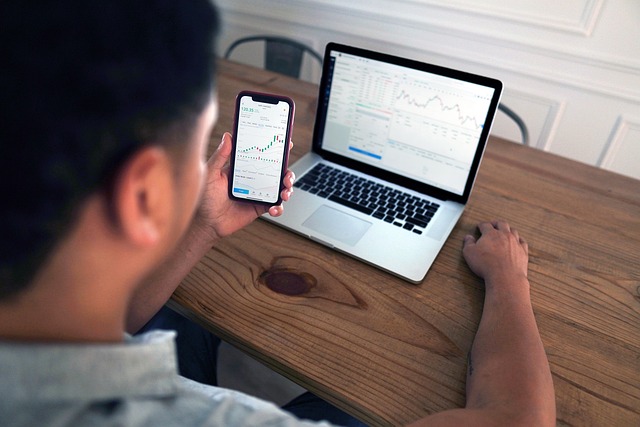Does Robinhood Have Trading Fees?
Author: Jameson Richman Expert
Published On: 2025-08-27
Prepared by Jameson Richman and our team of experts with over a decade of experience in cryptocurrency and digital asset analysis. Learn more about us.
Understanding whether Robinhood charges trading fees is a crucial aspect for both novice and seasoned investors aiming to optimize returns by minimizing costs. As an experienced trader and financial analyst, I’ve explored a multitude of online brokerages, observing how their fee structures impact profitability, especially for active traders. When I first ventured into online trading, the wide array of commissions, hidden fees, and subtle cost accumulations often seemed overwhelming. Over time, through in-depth research, real-world testing, and continuous learning, I’ve gained nuanced insights into Robinhood’s fee policies and their implications for traders. Despite Robinhood’s prominent branding around free trading, beneath the surface lie important considerations and additional costs that can influence your overall trading efficiency. This article provides a comprehensive analysis of Robinhood’s fee structure, compares it with other platforms, and discusses how these costs can shape your trading strategies.

Robinhood’s Core Fee Structure
Robinhood revolutionized online trading by pioneering a commission-free trading model, effectively lowering barriers to entry for individual investors. Since its inception, Robinhood has focused on offering stocks, ETFs, options, and cryptocurrencies without charging per-trade commissions. This approach has democratized access, encouraging both casual and frequent traders to participate actively in the markets without the burden of traditional trading fees. This model has significantly disrupted the brokerage industry, prompting competitors to rethink their fee structures to remain competitive.
The primary revenue mechanism for Robinhood is payment for order flow (PFOF). Rather than charging traders directly, Robinhood routes customer orders to third-party market makers—such as Citadel Securities, Virtu Financial, and others—in exchange for compensation. This arrangement allows Robinhood to sustain its zero-commission model but introduces important considerations regarding trade execution quality and transparency. While PFOF can sometimes provide favorable prices, there are ongoing debates about potential conflicts of interest, as order routing decisions might prioritize revenue for Robinhood over the best possible execution for traders. Regulatory bodies, including the SEC, have scrutinized PFOF arrangements for their potential to impact order quality and transparency. As a trader, understanding how this model influences trade prices and execution is vital for making informed decisions.
Additional Costs and Fees to Be Aware Of
Although Robinhood’s core appeal is its commission-free trades, several ancillary costs can affect your overall trading expenses. These costs become particularly relevant for active traders or those leveraging specific account features:
- Margin Trading and Robinhood Gold: Robinhood offers margin accounts through Robinhood Gold, enabling investors to borrow funds for leveraging their positions. Margin interest rates are tiered based on borrowed amounts, typically ranging from around 2.5% to over 5% annually, which are higher than traditional bank rates or premium brokerages. Interest accrues daily, meaning frequent margin use can significantly increase costs over time. Robinhood Gold costs $5 per month and includes benefits like access to margin trading, extended trading hours, and premium research tools. For active traders, these features can enhance potential gains but also add substantial costs that traders should incorporate into their profit calculations.
- Options Trading Fees: Robinhood does not charge commissions on options trades; however, it imposes a regulatory fee of approximately $0.65 per options contract. When executing multiple contracts or engaging in complex options strategies—such as spreads, straddles, or strangles—these per-contract fees can accumulate rapidly, impacting overall profitability. Sophisticated options traders should factor these costs into their models to accurately estimate net gains and assess trade viability.
- Transfer and Withdrawal Fees: Robinhood generally waives standard withdrawal and account transfer fees, making it an attractive platform for those transferring assets. However, certain transfer types—such as international transfers or expedited withdrawals via third-party services—may incur charges. Always verify current policies and fee disclosures to avoid surprises.
- Inactivity and Maintenance Fees: Notably, Robinhood does not charge inactivity fees, a common practice among traditional brokers. This feature benefits investors who prefer a buy-and-hold approach or trade infrequently, allowing them to keep accounts open without recurring costs.
How Payment for Order Flow Affects Your Trading
The practice of payment for order flow (PFOF) is central to Robinhood’s zero-commission model but also raises important considerations about trade quality and transparency. When a trader places an order, Robinhood’s algorithms often route it to a designated market maker that compensates Robinhood for executing the trade. Robinhood claims that PFOF does not compromise the quality of trade execution and adheres to best execution standards. However, independent research and regulatory reviews have expressed concerns about potential conflicts of interest and the possible impact on trade prices.
In volatile markets or during periods of low liquidity, the routing decisions influenced by PFOF can lead to fills at prices marginally worse than the best available on major exchanges. Although the difference may be negligible in many cases, for high-frequency traders or those executing large orders, these small costs can accumulate, eroding overall gains over time. Moreover, transparency around order routing decisions is limited, which can obscure the true costs of trading. For traders seeking optimal execution, understanding how PFOF influences trade outcomes is essential. Exploring alternative venues that offer direct exchange access or minimized order flow arrangements might be advantageous for high-volume or professional traders.

Comparing Robinhood with Other Trading Platforms
To better contextualize Robinhood’s fee structure, it’s instructive to compare it with other popular platforms:
- Traditional Brokers: Firms like E*TRADE, Charles Schwab, and Fidelity typically charge per-trade commissions ranging from $4.95 to $9.99. These platforms often provide advanced research tools, direct exchange access, and a broader suite of account features. While these higher fees can add up, they potentially offer better trade execution, especially for active or institutional traders. The choice often depends on balancing cost with service quality and trading needs.
- Cryptocurrency and Digital Asset Platforms: Platforms like Binance, MEXC, and Bitget utilize tiered fee structures—offering maker-taker fees as low as 0.04% at high trading volumes. Many of these platforms also provide referral incentives, loyalty discounts, and transparent fee disclosures. For traders in digital assets, these models often result in lower overall costs, especially at scale.
- Futures and Derivatives Platforms: Futures and options exchanges frequently employ maker-taker spreads, flat fees, or volume-based discounts. These models are designed to reward high-volume traders and often feature zero or minimal fees at high turnover levels. Such platforms are tailored for sophisticated traders seeking cost efficiency in complex trading strategies.
For traders focused on minimizing costs, especially in crypto and derivatives markets, exploring these alternative platforms can be fruitful. Resources like this comprehensive guide on trade amount and trading costs offer valuable insights into how trade size and platform choice influence overall expenses.
Implications of Fees on Trading Strategies
A thorough understanding of fee structures directly influences the development of effective trading strategies. High-frequency traders or day traders executing dozens or hundreds of trades daily must consider per-trade, per-contract, and margin-related costs, which can significantly diminish gross gains if not managed properly. Slippage, bid-ask spreads, and order routing impacts compound these costs, emphasizing the importance of strategic order placement, timing, and trade sizing.
Conversely, long-term investors employing buy-and-hold strategies are less affected by frequent trading costs but should remain mindful of margin interest, spreads when entering or exiting positions, and fees related to cash transfers or account maintenance. Recognizing how these ancillary costs erode net returns helps in refining strategies, managing risk, and achieving more accurate performance assessments.
Exploring detailed case studies and simulations can provide deeper insights into how fees influence specific asset classes or strategies. For instance, this analysis of Bitcoin sell fees in 2025 illustrates how fees impact cryptocurrency trading profitability over time.
The Importance of Fee Transparency and Market Dynamics
While Robinhood’s transparent fee disclosures foster trust, traders must remain vigilant about less transparent costs—such as spreads, order routing choices, and latency-induced price differences. Market orders, for instance, are susceptible to being filled at prices worse than the quoting bid-ask spread due to order flow arrangements and market microstructure effects. Understanding these market dynamics allows traders to optimize execution and better mitigate risk.
Gaining a deep understanding of liquidity levels, order book depth, and how order flow influences prices can provide a competitive edge. Resources such as this in-depth analysis of Bitcoin’s market behavior help traders grasp the broader market forces affecting their trades and costs.

Final Thoughts: Maximizing Profitability by Managing Costs
In conclusion, Robinhood’s allure lies in its promise of commission-free trading, making it especially attractive for beginners and casual investors. However, savvy traders recognize that hidden or indirect costs—such as margin interest, options contract fees, spreads, and the subtle influence of payment for order flow—can erode gains over time. Conducting thorough fee disclosures review, comparing alternative platforms, and understanding how these costs affect net returns are vital steps for enhancing profitability.
Exploring other venues like Binance, MEXC, Bitget, or Bybit can offer lower-cost trading opportunities, particularly in crypto and derivatives markets where tiered fee structures and volume discounts are common. Remember, successful trading hinges not only on avoiding explicit fees but also on understanding and managing the full spectrum of trading costs. An informed, strategic approach ensures smarter trades, maximized returns, and resilient, cost-efficient investment routines.